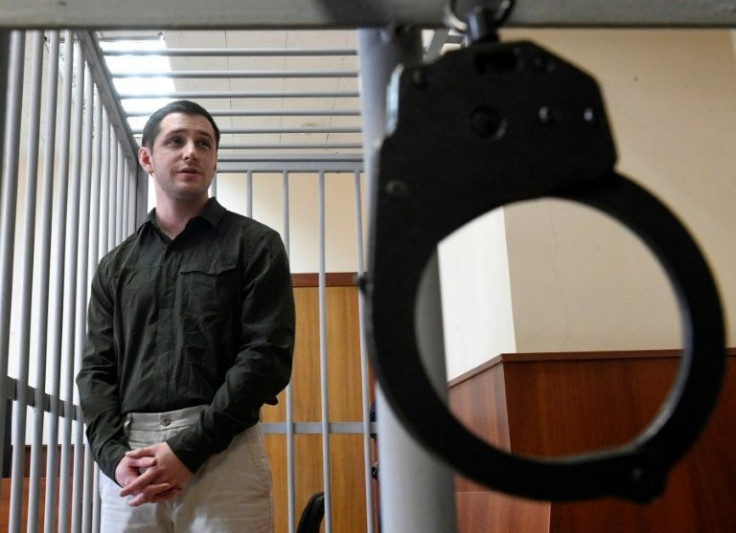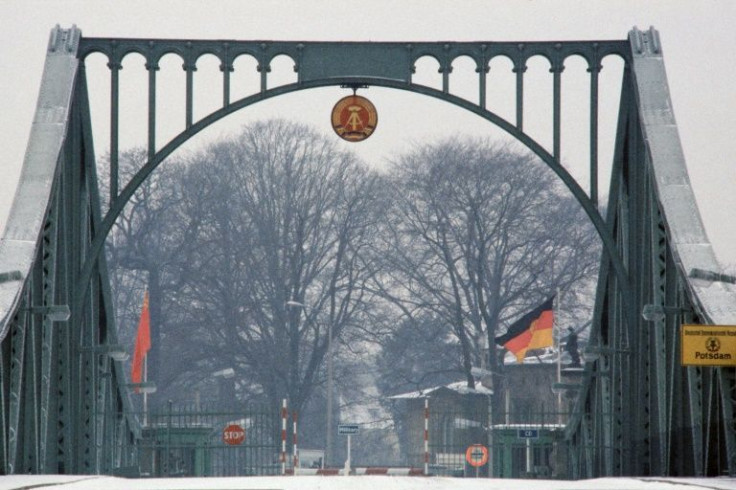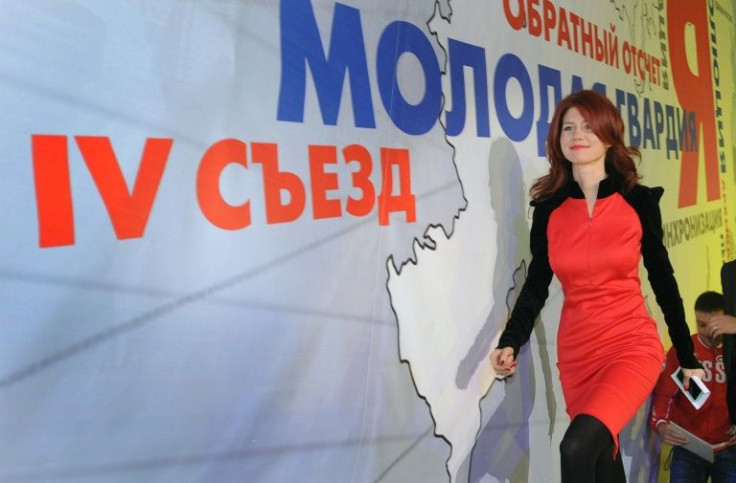With Prisoner Swap, US And Russia Return To Time-honored Rite
Quiet negotiations amid crisis followed by prisoners walking free onto the tarmac. With Wednesday's choreographed inmate swap, the United States and Russia are finding new use for a Cold War rite.
As the West pummels Russia with sanctions over its invasion of Ukraine, Washington insisted it was not making any diplomatic overture to Moscow but the deal demonstrated that the two rival powers still have at least a narrow working relationship.
Footage on Russian television showed former US marine Trevor Reed, 30, in a trench coat being taken out of a van by three camouflaged Russians, apparently on the airport tarmac.
The plane went to Turkey -- which unlike European Union nations has not banned Russian flights -- where he was exchanged for Konstantin Yaroshenko, a pilot whose sentence for drug smuggling was commuted by President Joe Biden.

"The American plane pulled up next to the Russian plane and they walked both prisoners across at the same time, like you see in the movies," father Joey Reed told CNN shortly after the release was simultaneously announced in Washington and Moscow.
The deal came despite a largely vacant US embassy in Moscow after long-running complaints by Washington about staffing restrictions.
During the Cold War, the two superpowers would exchange prisoners, often in the fog of night, on divided Berlin's Glienicke Bridge, nicknamed the "Bridge of Spies."
One of the most famous swaps took place in 1986 when the leading Soviet dissident Natan Sharansky was freed to the West in exchange for a mole in the CIA originally from the former Czechoslovakia.

Reed, who was jailed for allegedly drunkenly assaulting police officers, hardly has the prominence of Sharansky, with few direct political implications for his release.
President Vladimir Putin has long spoken of swapping prisoners, including after his summit with Biden in June 2021.

The timing amid the Ukraine war may be Putin showing he can still do business with the United States, said Donald Jensen, who formerly served in the US embassy in Moscow.
"I think neither side really wants to cut things off entirely," said Jensen, director for Russia and Europe at the US Institute of Peace.
"And let's be honest, a prisoner exchange is important for the families but to some extent, it's relatively minor in terms of the overall relationship."
For Russia, such a Cold War-type exchange is also important "for self-image as the co-equal of the United States -- that they and the US are superpowers and they decide things like this," Jensen said.
The Biden administration in turn feels it needs to preserve at least some working relationship with Russia in key areas, notably diplomacy on Iran, he said.
The release of American captives has been a paramount goal of US foreign policy across administrations, with the fate of detained Americans weighing heavily on negotiations to revive a nuclear accord with Tehran.
In 2019, despite high tensions, senior US and Iranian officials both flew to Zurich to oversee the tarmac swap of each other's citizens.
A high-level US delegation last month also helped secure the release of Americans from another adversarial government: Venezuela.
At least two more Americans are imprisoned in Russia -- Paul Whelan, a former security official at a vehicle parts company, and Brittney Griner, a basketball player accused of drug possession -- meaning that more such exchanges could be in store.
The last such prisoner swap between Washington and Moscow took place in 2010 in Vienna.
The people freed included Anna Chapman, a Russian socialite in New York arrested over espionage, and Sergei Skripal, a former Russian intelligence officer who was a double agent for Britain.
Skripal resettled in England. Eight years later, he was almost killed in a poisoning attack blamed on Russian operatives.
© Copyright AFP 2024. All rights reserved.




















